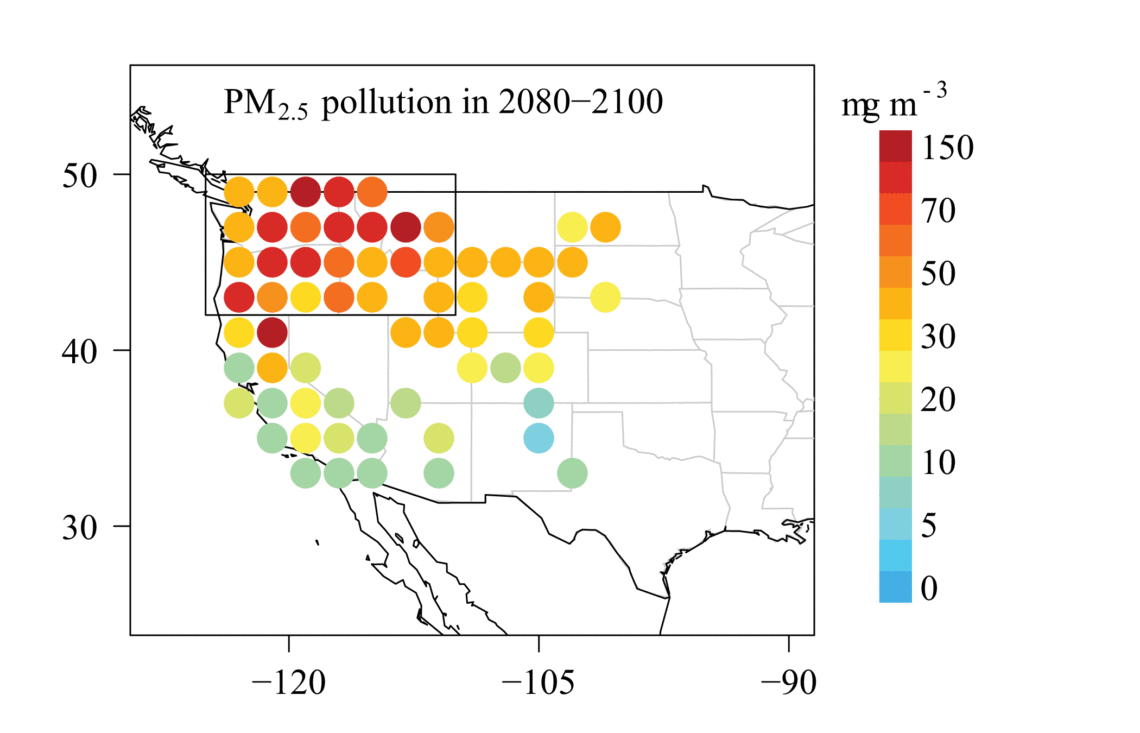March 28th, 2022
Key Findings
- Applying an empirical statistical model to fires projected by three Earth system models including climate-ecosystem-socioeconomic interactions, we show that fine particulate pollution over the US Pacific Northwest could double to triple during late summer to fall by the end of the 21st century under intermediate- and low-mitigation scenarios.
- The historic fires and resulting pollution extremes of 2017–2020 could occur every 3 to 5 years under 21st century climate change, posing challenges for regional air quality management and threatening public health.
- Even with strong mitigation efforts, pollution in the western US would increase ~50% by mid-century during the months of August and September.
Yuanyu Xie, Meiyun Lin, Bertrand Decharme, Christine Delire, Larry W. Horowitz, David M. Lawrence, Fang Li, Roland Séférian. Proceedings of the National Academy of Sciences. DOI: 10.1073/pnas.2111372119
Record-setting fires in the western US over the last decade caused severe air pollution, loss of human life, and property damage. Enhanced drought and increased biomass in a warmer climate may fuel larger and more frequent wildfires in the coming decades. The air quality impact of increased wildfires in a warming climate has often been overlooked in current model projections, owing to the lack of interactive fire emissions of gases and particles responding to climate change in Earth System Model (ESM) projection simulations.
This research combines multi-ensemble projections of wildfires in three ESMs (including GFDL’s ESM4) with an empirical statistical model, to predict fine particulate pollution in the late 21st century. The three ESMs were taken from the Sixth Coupled Model Intercomparison Project using several different possible scenarios of how socioeconomic factors, as well as mitigation efforts, may change in the future.
Total carbon dioxide emissions from fires over western North America during August–September are projected to increase from present-day values by 60–110% under a strong-mitigation scenario, 100–150% under a moderate-mitigation scenario, and 130–260% under a low-mitigation scenario in 2080–2100.
The authors found that enhanced wildfire activity could cause a two- to three-fold increase in particulate matter (PM) pollution over the US Pacific Northwest during August–September. Even with strong mitigation, PM pollution in the western US would increase ~50% by mid-century. In contrast, chemistry-climate models using prescribed fire emissions of particles not responding to climate change simulate only a 7% increase in PM pollution.
By 2080–2100 under the low mitigation scenario, the 95th percentile of late summer daily PM pollution may frequently reach unhealthy levels. The consequential pollution events caused by large fires during 2017–2020 might become a new norm by the late 21st century, with a return period of every 3 to 5 years under the moderate and low-mitigation scenarios.



